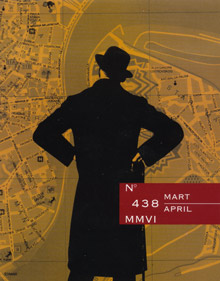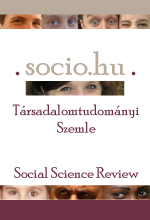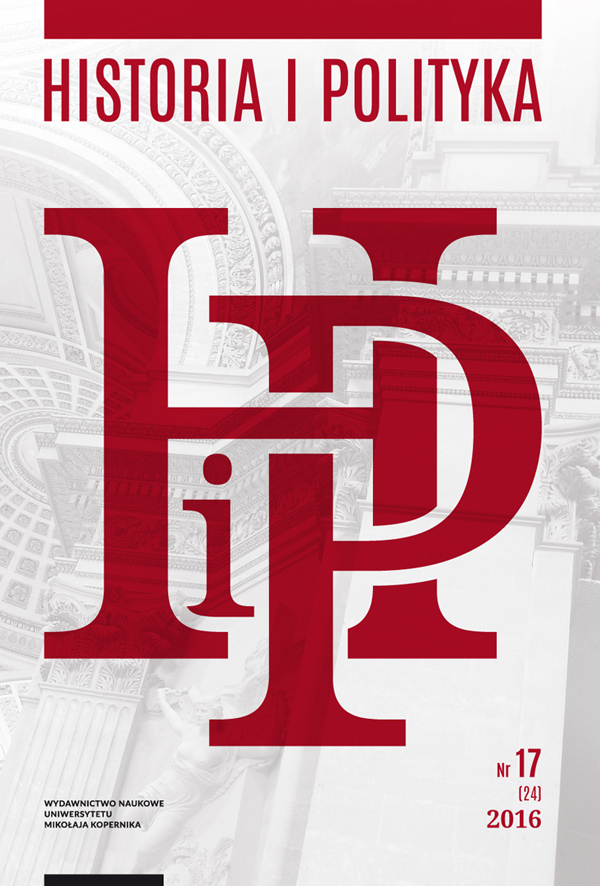
We kindly inform you that, as long as the subject affiliation of our 300.000+ articles is in progress, you might get unsufficient or no results on your third level or second level search. In this case, please broaden your search criteria.

The aim of this article is to present the result of research using methods of oral history to find out the attitudes and work of Czech journalists working in the 70s and 80s of the 20th century in the regional (provincial and district) media controlled by the Communist Party. The interviews were conducted with a total of 13 journalists from 7 editorial departments (newsrooms) from different cities within the Czech Socialist Republic. The experimental part of the paper is divided into five chapters in relation to the main research questions: self-censorship; retrospective work evaluation and the role of (regional) Communist press; relationship with the Communist Party, the influence of political actors to topics selection; preferred vs. banned topics; and the last part, including specific cases, due to which journalists were in trouble, mostly on the basis of published material, which was in conflict with Communist Party politics.
More...

You could say that Anka Grupińska liked oral history projects. A significant place in her creative activity was also occupied by Jewish themes. In "Still in a Circle", Grupińska combines her interest in the history of the Warsaw Jews with her consistent commitment to projects based on oral history. "Conversations with Soldiers of the Warsaw Ghetto" is a work that is by any measure unique, representing the beginning of its author’s public interest in Jewish subjects, and a source of self-consciousness-raising research. What is interesting is the way in which Grupińska speaks, how she asks questions, how she confronts different versions of events. The reflections contained in the article are complemented by commentary from Grupińska herself on her work on the book, as well as on oral history in general.
More...
In the following contribution the author focuses on the methodological questions she dealt with during the recording and analysis of testimonies for the purpose of researching everyday life in socialism. The first part of the contribution is dedicated to questions related to the selection of the research method and the recording of testimonies. The author describes her fieldwork experience, the way of relating to the witnesses, and how different factors impacted the dynamics of the testimonies. In the second part of the contribution she focuses on the issues involved in the content analysis and wonders about the actual image of the past based on testimonies. It is evident that memories and deliberations on the past reflect individual experiences and simultaneously also strongly depend on the momentary involvement of witnesses in the environment and space. The collected testimonies reveal to what degree these narrations were impacted by the original environment of the witnesses, historical experience of their families, the period of the economic crisis and social discontent during which the recordings were made, or integration into the wider social context where different public discourses play an important role as well. The diverse outlooks on the past formed under the influence of these factors represent important material for understanding the social processes in socialism and post-socialism. However, a scientific analysis of these outlooks is required.
More...
This paper is an interview made by the writer Vasile Ernu with the Russian professor Tatiana Nikoliskaia, author of the book The Russian Protestantism and the State Power, 1905-1991, published at the European University of Sankt-Petersburg Printing House in 2009 [in Russian: Татьяна Никольская, Русский протестантизм и государственная власть в 1905-1991 годах, Санкт-Петербурге, Издательство Европейского Университета, 2009]. The author of the volume is a historian and one of the few researchers on a niche field not so often approached: the relation between the Russian Protestants community, members of a religious minority in the Russian Empire and in the former Soviet Union, and the Power. The interview is based on the structure of the book. First it tries to mark, as does the volume, a historical evolution of this relation between 1905 and the October Revolution in 1917; the agitated period after the radical changes made by the October Revolution until the establishment of the Stalinist regime; the Stalinist period, the period of thawing during Hrushciov administration; the period of stagnation duringBrejnev administration; the Perestroika period and the collapse of the Soviet Union and the post-communist Russia. The interview presents several key elements of each of these periods questioning the relation between the Protestant community and the respective power of the period. A second direction is represented by certain major themes related to this relation (the Russian Protestantism and the Power), like the censorship; the type of the relation with the Tsarist state and the differences among different communist periods; the repressions, the relation of the community with the majority Church; the relation of the Protestant movement with the Western world, the type of organization; the antireligious propaganda used by the Power in different periods; the Protestant community during the World War II; the relation between different Protestant leaders and Soviet dissidents; production and dissemination of the printed materials; the evolution of these communities during post-communist period etc. The interview, even it is not an exhaustive and ample document, aims only to present a book and a research field and to analyze the central elements of the history and the relation between the Russian Protestantism and the Tsarist and Soviet Power over almost 90 years of the terrible 20th century. Hoping that the material will arouse interest we hope that we shall see this book translated in Romanian but also many papers approaching the relation between the Romanian Protestantism and the local Power, which faced similar problems and conflicts.
More...
In the first years after the Second World War, the North of Moldova and Bucovina were among the most troubled areas of the country, as far as a Soviet-like collectivization was concerned, especially taking into account the fact that all the measures that had been taken by the new regime led in that direction. The inevitable happened on 3-5 of March, 1949, when the Plenary Session of the Romanian Labor Party’s Central Committee announced the beginning of collectivization. The idea of taking properties away from peasants raised anxiety in the rural world. Considering the harsh conditions left behind by the 4 years of war, doubled by the effects of the drought of 1946, the peasants’ sentiment towards their property had grown acute. Nevertheless, the majority of the peasants chose to obey the measures taken by the regime. As a consequence, the main objective we set forth is to observe the attitude of the majority of the rural population in the region on the background of revolts against the regime. Our goal is to discover the reasons which accounted for a part of the rural world’s passivity concerning a principle they didn’t believe in themselves: the collectivization of agriculture. At the same time, we will focus on the strategies of the communist regime in reaching its objective to carry collectivization through, more exactly on the way the authorities managed to convince peasants to accept such a change in their lives. Basically, was it the peasants’ resistance during the first wave of collectivization in the region that changed so radically the strategy adopted by the authorities? Another aspect we would like to address refers to the way in which the collectivization changed the social status and the people’s self-image following the authorities’ desire to attract as many families as possible into the collective form.
More...
Oft in Versform, Geheimnisrätsel bilden eine Gruppe Rätseln, die eine große Erfindungskraft und metaphorischen Reichtum zeugen. Während einer Zeitspanne von eineinhalb Jahrhunderten wurden mehr als 2200 derartige Rätsel gesammelt und veröffentlicht, die meisten von ihnen aus der Bukowina (mehr als die Hälfte), der Moldau, der Kleinen Walachei/Oltenia, aus Siebenbürgen/Transilvania und aus der Groβen Walachei/Muntenia. Die vorliegende Arbeit konzentriert sich auf die in Rätsel eingebundenen Pflanzen. Dabei geht es um 53 Arten von Wild- und Kulturpflanzen, die in den veröffentlichten Rätseln vorkommen. Hinzu kommen noch 12 Arten, die vom Verfasser selbst in den Kreisen Sibiu/Hermannstadt, Brasov /Kronstadt, Alba/Weiβenburg, Vâlcea, Olt und Teleorman gesammelt wurden.
More...
Uprava za zaštitu kulturnih dobara Crne Gore proglasila je, krajem prošle godine, predanje o Pavi i Ahmetu nematerijalnim kulturnim dobrom od lokalnog značaja. U Rješenju, koje potpisuje direktorica Uprave mr Anastazija Miranović, navodi se da to predanje posjeduje autentičnost, jedinstvenost i rijetkost, kao i istorijski, socijalno ekonomski, vaspitno obrazovni, umjetnički značaj kao i značaj starosti i rijetkosti dobra, dok su „nosioci–čuvari kulturnih vrijednosti ovog kuturnog dobra: Veselin Konjević, podnosilac Inicijative za uspostavljanje zaštite dobra Predanje o Pavi i Ahmet-paši iz Pavinog Polja, opština Bijelo Polje; stvaraoci različitih profila koji u svojim djelima promovišu vrijednosti predanja o Pavi i Ahmetu i članovi zajednice porijeklom iz Pavinoga Polja“.
More...
Zaim Azemović (Bukovica kod Rožaja, 1935) je do sada objavio 36. naslova pripovijedaka, pjesama, romana, monografija i književno-naučnih radova. Njegovo literano stvaralaštvo zastupljeno je u 18. antologija i zbornika. Dobitnik je više književnih nagrada i priznanja.
More...

Introducing the collection of social psychologist István Síklaki
More...
Introduction of the 'Roma Civil Rights Evenings' collection
More...
collection of the interviews made within the national representative Roma research conducted in 1971 by István Kemény
More...
– O, o, o! Nisu me slagali! – Zdravo, Endi! – Dobro veče, gospođo Miler. – Da, ja bih viski, dupli i bez leda. –Pomislio sam da je neka tvoja dvojnica zalutala ovamo. – Znam da si na lošem glasu i da prave dame ne dolaze na ovo bizarno mesto puno dima, puno nesnosne buke, puno feminiziranih momaka, puno promašenih umetnika...
More...



Bitka na Visu predstavlja jedan od najznačajnijih događaja iz perioda odbrambenooslobodilačkog rata 1992.-1995. na prostorima općine Gračanica i šire regije, ali ujedno i jedan od najznačajnijih historijskih datuma u našoj lokalnoj povijesti uopće. Danas, kada obilježavamo trinaestu godišnjice od oslobađanja Visa, najdominantnije kote na Trebavi i jednog od najzloglasnijih agresorskih utvrđenja u ovom dijelu Bosne, prezentiramo projekt pod radnim naslovom “Bitka na Visu – usmena historija”. Nosioci projekta su Redakcija Časopisa za kulturnu historiju – „Gračanički glasnik“ i Bosanski kulturni centar u Gračanici.
More...
Oral history is an increasingly popular method of acquiring knowledge about the past. In addition, it offers many benefits for the users of this method. Notably, oral history changes the point of view, because it puts a man, a group of “ordinary” people along with their emotions, feelings, and experiences, in the spotlight. Listening and speaking about emotions could help both parties enter into dialogue and achieve mutual understanding. This is particularly important in situations of conflict and traumatic episodes.
More...